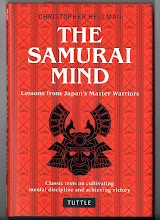
This is a very different film from the 13 Assassins - as the title might indicate, although it sounds more impressive in Japanese, and it too involves an attack on an unpopular feudal lord by a bunch of political dissidents.
This time, however, it based on a real event and its aftermath - the assassination of the minister (Tairo) Ii Naosuke, in 1860, in which the action plays a relatively small but important role. More realistic than 13 Assassins, I have to say that it was not nearly so exciting. Perhaps not surprisingly, as it is a drama, rather than 'chanbara'. It is the story of hopes and subsequent disillusionment as the 'great act' proves to have far less impact than was hoped, and the plotters gradually see their plans fall apart, promises broken and treachery from their friends as the government closes in on them. As with other films that have portrayed the incident, the overall mood is far from positive, which contrasts quite strongly with those that deal with other themes from roughly the same period such as the Shinsengumi or Saigo Takamori.
Although this sounds like a recipe for for an interesting film, I can't whole-heartedly say that it was. Part of the trouble is that the story didn't really hold together in a single narrative - it seemed like a series of vignettes, arranged roughly chronologically with terse and possibly meaningful dialogue vaguely related to the narrative stream. Transitions were handled with narration and on-screen text that proved a bit of a challenge to my Japanese (one of the problems with historical dramas, even if your Japanese is at a reasonable level) - and many of the character were likewise introduced by on-screen text. With subtitles, it would be considerably easier to follow, but even so, not an easy film to watch.
It was good on portraying the stultifying and dangerous atmosphere of the times - the set dressing was, once again, very accurate, and the fight scenes, especially the attack on the palanquin, gave an exceptionally clear impression of how bloody, brutal and downright dangerous sword combat can be. This is another movie with a large amount of blood letting - justified, but not for the weak of stomach.
Strangely, although I caught myself yawning once or twice, it has stayed with me more strongly than 13 Assassins - there is definitely something here that is worth seeing, but I hesitate to recommend it unless you are a die hard fan of this kind of thing. If 13 Assassins was a kind of Seven Samurai, this is far closer to something like Mizoguchi's Chushingura.
Lastly, for sword buffs, an added point of interest is that the main character, Seki Tetsunosuke, (and at least one of the minor ones) studied Kashima Shin Ryu kenjutsu under Kunii Kyûuemon. And you get to see him in a duel, too.















